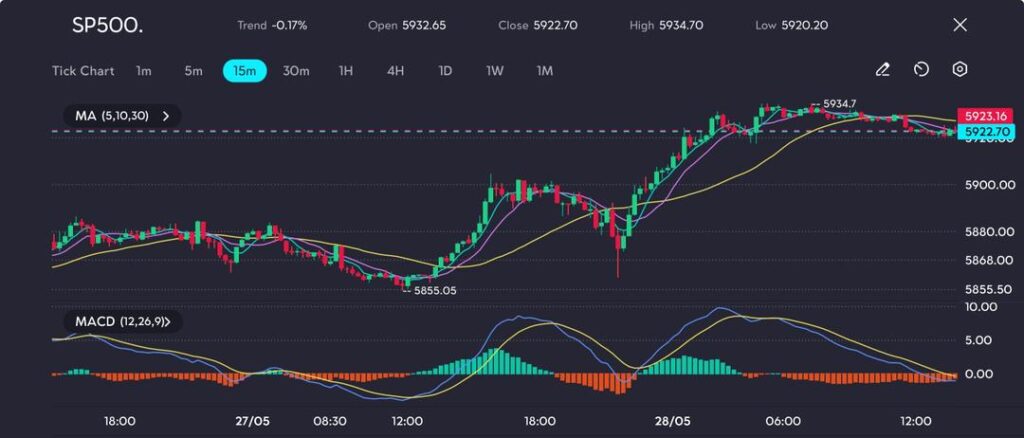The S&P 500 hovered just under the 5930 level on Wednesday, trading sideways after bouncing back from a session low of 5855.05. Market participants remained cautious ahead of Nvidia’s eagerly awaited earnings release. A glance at the 15-minute chart reveals that price movements have narrowed into a tight band between 5922 and 5934, with momentum indicators such as the MACD suggesting a waning bullish impulse.
Following Tuesday’s rally, which saw Nvidia’s share price surge more than 4% on optimism surrounding AI-related revenue growth, market sentiment has turned more restrained. Traders are now looking for confirmation that Nvidia can meet the lofty expectations. According to LSEG estimates, the company is forecast to post a 66.2% increase in first-quarter revenue, reaching $43.28 billion.
In the broader macro landscape, US consumer confidence figures came in stronger than expected, lending support to the US dollar and putting a cap on equity valuations as bond yields steadied. The dollar index climbed a further 0.25%, building on Tuesday’s 0.6% advance, while the euro dipped to $1.1304. Yields on longer-dated US Treasuries paused after recent gains, offering temporary respite to equity investors wary of valuation pressure.
Technical Analysis
The SP500 rebounded sharply from the 5855.05 low on 27 May, surging over 80 points to test resistance near 5934.70 in early 28 May trading. The recovery was driven by strong bullish candles with price action lifting above all three moving averages (5, 10, 30), signalling short-term bullish momentum. However, the rally stalled near the prior peak, with the price now consolidating just below resistance.

The MACD shows waning bullish momentum, with histogram bars shrinking and the MACD line approaching a potential bearish crossover. If support at 5920 holds, a second leg higher is possible. Otherwise, a break below the 30-MA could expose the 5900–5890 region for a retest.
Measured Outlook
The next decisive move in the S&P 500 will likely be determined by Nvidia’s results. A strong earnings beat could ignite a rally toward the 5950–5970 region, whereas a disappointment might prompt a drop below the 5900 mark.
With bond market volatility easing and key economic data remaining resilient, the downside risk appears contained in the short term, but a clear catalyst is needed for further upside. For now, the mood remains one of cautious optimism.
Open a live trading account with VT Markets today and take advantage of market opportunities.




